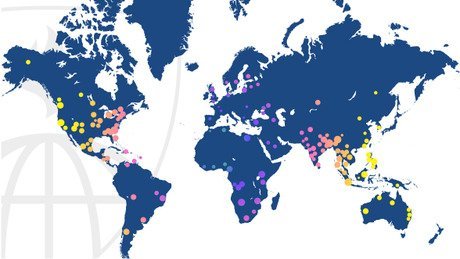GRATIS
Acerca de este curso
- Module 1: Introduction to Validity and Bias
- Every time you conduct a study, the most important questions to ask are whether your results are an accurate reflection of the truth both within your sample and in the broader population of interest. This is called validity of the study and more or less determines if your study is of any value. In this module we will discuss what validity actually means and we will describe the different types of systematic error, or bias that may undermine the validity of a study. You will learn how to identify and prevent selection bias and information bias and their variations.
- MODULE 2: Confounding
- Studies often focus on the association between two variables; for instance, between a risk factor and a disease. However, reality is usually complex and there are many other variables that may influence this association. Sometimes, the presence of a third variable can either exaggerate the association between the two variables we study or mask an underlying true association. This is called confounding and is any researcher’s nightmare. In this module, you will learn multiple methods to detect confounding in a study, so that you can prepare to deal with it. By the end of the module, you will be able to apply these methods to actual data and conclude whether there is confounding.
- MODULE 3: Dealing with Confounding
- This module is dedicated to dealing with confounding. Confounding can be addressed either at the design stage, before data is collected, or at the analysis stage. You will learn the main approaches to dealing with confounding and you will see practical examples on how to do this in your own studies. We will also briefly discuss about the Directed Acyclic Graphs, which is a novel way to detect bias and confounding and control for them.
- MODULE 4: Effect Modification
- This is the final module of the course. We start by discussing what happens when the effect of an exposure on an outcome differs across levels of another variable. This is called effect modification. We will discuss how to approach effect modification and we will highlight the distinction between confounding and effect modification. We will close the course by revisiting causal inference in epidemiology, discussing how we can go through all potential explanations of an association before deciding whether it is of causal nature.
Cursos relacionados

GRATIS Aprendiendo a aprender: Poderosas herramientas mentales…
Deep teaching solutions
Español

GRATIS Programación para todos (Introducción a Python)
University of Michigan
Inglés

GRATIS The Science of Well-Being
Yale
Inglés

GRATIS Negociación exitosa: Estrategias y habilidades esenciales
University of Michigan
Inglés

GRATIS Primeros Auxilios Psicológicos (PAP)
Universitat Autónoma de Barcelona
Español

